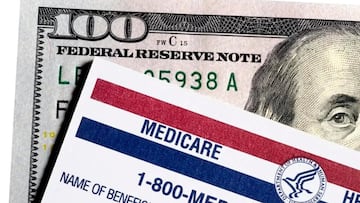Social Security Benefits and Medicare 2025: The changes coming for retirees
As 2024 draws to a close, we look at the changes Social Security beneficiaries and Medicare members will face in the new year and how to navigate them.


As a new adminstration prepares to take power, Medicare and Social Security beneficiaries should be aware that there shouldn’t be any immediate changes to their benefits outside of those that are to be expected, like the annual Cost-of-living Adjustment (COLA - Social Security) and changes to premium prices and deductibles (Medicare).
Changes coming to Social Security
Thanks to the 2025 COLA, Social Security beneficiaries will see their checks rise by 2.5 percent starting in January. This adjustment is lower than those applied to benefits over the last two years—3.2 percent in 2024 and 8.7 percent in 2023—a sign that inflation is slowing. Nevertheless, the fact that a COLA has to be offered means that prices have risen over the last year, and some organizations, like the Senior Citizens League, do not see the COLA as sufficient.
In the coming weeks, Social Security beneficiaries will be sent a letter detailing the increase to their benefits that they will see reflected in the new year.
Changes coming to Medicare
As far as Medicare is concerned, the deductible for Part A will rise by $44 on average compared to 2024:
- Inpatient hospital deductible: $1,676
- Daily hospital coinsurance for 61st-90th day: $419
- Daily hospital coinsurance for lifetime reserve days: $838
- Skilled nursing facility daily coinsurance (days 21-100): $209.50
As far as Part B is concerned, those who recieve Social Security and are enrolled in Medicare will see the premium deducted from their benefits rise by $10:30 to $185.00 starting in January. The deductable for Part B, which covers outpatient patient serves, will rise by $17 to $257.
Your chance to make a change to your healthcare plan - Medicare Open Enrollment
Related stories
For those that are interested in making their own changes to their healthcare plan, the Medicare Open Enrollment Period is underway through 7 December. If you would like to opt-into an income based perscription plan, otherwise known as a Medicare Part D plan, you have just a few weeks to select one. Part D plans make perscription drugs more affordable. For single taxfilers with an income under $106,000 or who file jointly and earn less than $212,000 will not see any funds deducted from their Social Security check. According to the Centers for Medicare and Medicaid Services, only around eight percent of Part D plan holders pay anything for them based on the income thresholds.
One change that went into effect during the Biden adminstration was the capping of the price of insulin at $35 for a months supply, for seniors enrolled in a Part D plan.
Complete your personal details to comment